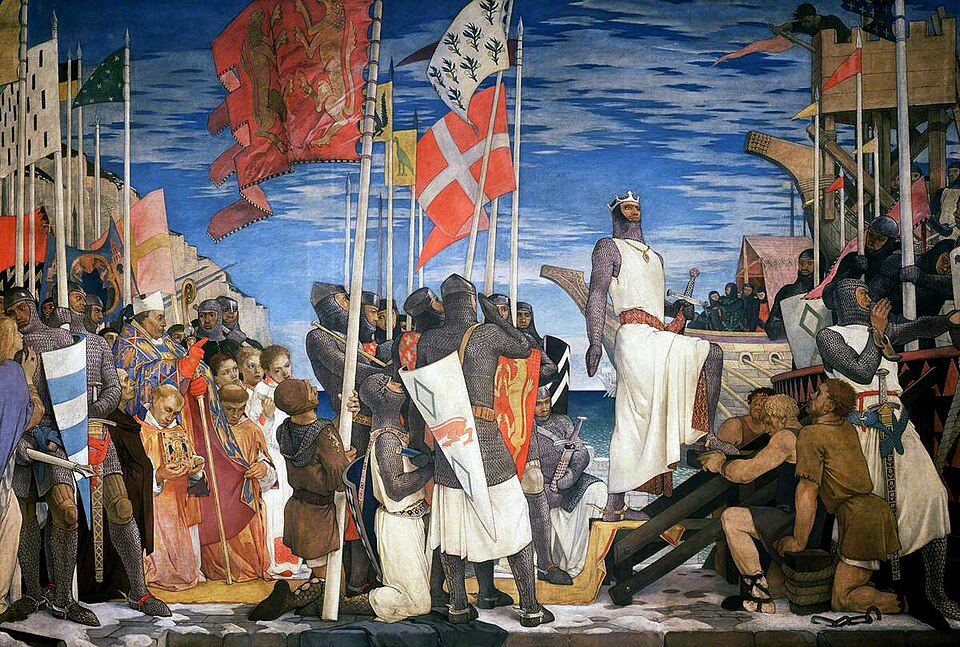History isn’t just a bunch of isolated empires doing their own thing—it’s more like a giant potluck where everyone brought ideas, art, and inventions to share (and sometimes steal). Trade, travel, war, and curiosity helped mix cultures together in ways that created entirely new ways of living, thinking, and vibing. This article dives into moments when civilizations crossed paths and what came out of it—from math and music to religions and recipes. Because when people meet, ideas move—and sometimes things get weird in the best way.
The Hellenistic World Was Basically a Cultural Remix
When Alexander the Great did his world tour (with armies, not music), he didn’t just conquer—he connected. Greek culture spread through Egypt, Persia, and parts of India, blending with local traditions to create something totally new. You got Greek-style statues wearing Eastern robes, new gods on the block, and a mashup of architecture, language, and science. Alexandria became a hub where Egyptians, Greeks, Jews, and others traded more than goods—they traded worldviews.
The Silk Road Traded Ideas as Much as Silk
Everyone talks about the luxury goods, but the Silk Road was just as important for moving beliefs, languages, and knowledge. Buddhism rode those dusty roads from India into China and beyond, picking up new styles and interpretations along the way. Art, medicine, and tech flowed between empires like cultural Wi-Fi. You could buy a rug, hear a new story, and learn astronomy—all before your camel even needed a break.
Islamic Golden Age Scholars Bridged Ancient Wisdom
In cities like Baghdad and Córdoba, Muslim scholars weren’t just translating ancient Greek and Roman texts—they were building on them. They blended knowledge from India, Persia, Greece, and more to push math, medicine, and philosophy forward. Algebra, surgical tools, and commentaries on Aristotle all came out of this intellectual fusion. It was one of history’s greatest group projects—and shockingly, it worked.
The Mongol Empire Was a Giant Cultural Highway
Yes, the Mongols conquered aggressively—but they also connected an enormous stretch of the globe. Once the fighting slowed down, trade routes opened up, and cultures mingled like never before. You could find Persian astronomers working in China and Italian merchants (hello, Marco Polo) bringing back stories and noodles. The Pax Mongolica may sound like a metal band, but it was actually a surprisingly chill period for global exchange.
The Crusades Were Bloody But Culturally Busy
Sure, the Crusades were mostly about war and religion, but along the way, a lot of cultural borrowing happened. Europeans picked up science, spices, textiles, and architectural styles from the Islamic world. Libraries were raided, but ideas stuck. When the knights weren’t swinging swords, they were low-key rethinking how to build castles, treat illnesses, and dress with a bit more flair.
The Ottoman Empire Blended East and West on Purpose
Straddling Europe, Asia, and the Middle East, the Ottoman Empire was the ultimate cultural bridge. They welcomed artists, scientists, and thinkers from all over, mixing Islamic traditions with Byzantine, Persian, Arab, and even European influences. Istanbul was the crossroads where coffee, calligraphy, and court music all found a home. The Ottomans made multiculturalism look effortless—until it wasn’t.
The Indian Subcontinent Was a Constant Cultural Mashup
India has always been a cultural melting pot, shaped by waves of migration, trade, and conquest. From the fusion of Vedic and Dravidian traditions to the later mix of Hindu, Buddhist, Jain, Islamic, and Sikh influences, Indian culture is one long remix. Mughal art and architecture, for example, blended Persian style with Indian motifs and local craftsmanship. Even the food is a collision of flavors from across centuries and continents.
The Americas Met Europe and Everything Changed
When Europeans arrived in the Americas, it kicked off one of the most dramatic cultural collisions in history. Indigenous traditions mixed (often forcibly) with European religion, language, and governance. New foods, animals, and diseases crossed the ocean both ways. While the colonial impact was devastating, the cultural legacies that emerged—like mestizo identity, syncretic religions, and Latin American art—reflect a deep, complex fusion.
China’s Tribute System Was Trade With a Side of Influence
China’s tribute system wasn’t just about gifts and respect—it was a clever way of exporting culture. Neighboring states would adopt Chinese writing, philosophy, and political ideas in exchange for trade rights and imperial approval. Korea, Vietnam, and Japan all took what they liked and mixed it with local customs. It was part diplomacy, part soft power, and very on-brand for the world’s most confident ancient superpower.
Modern Globalization Is Fusion on Fast Forward
Today, we’re all part of one giant cultural crossroads. Sushi in Paris, K-pop in Argentina, Bollywood in Canada—it’s all connected. Technology has turned cultural fusion into a daily event, from shared memes to international fashion trends. It’s not always smooth (hello, cultural appropriation debates), but the blending of global ideas continues. History set the stage, and now we’re remixing at record speed.

